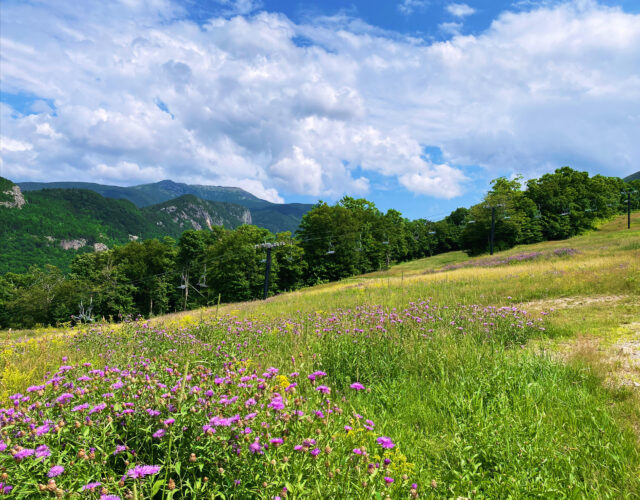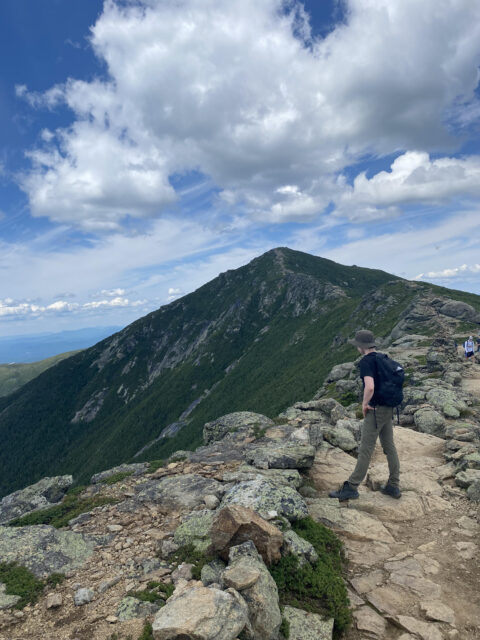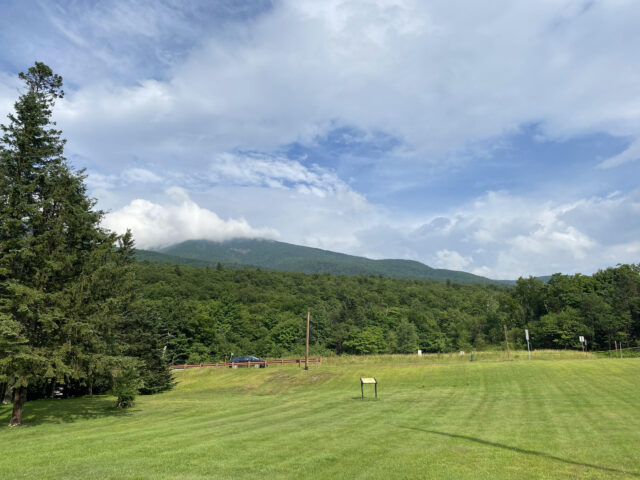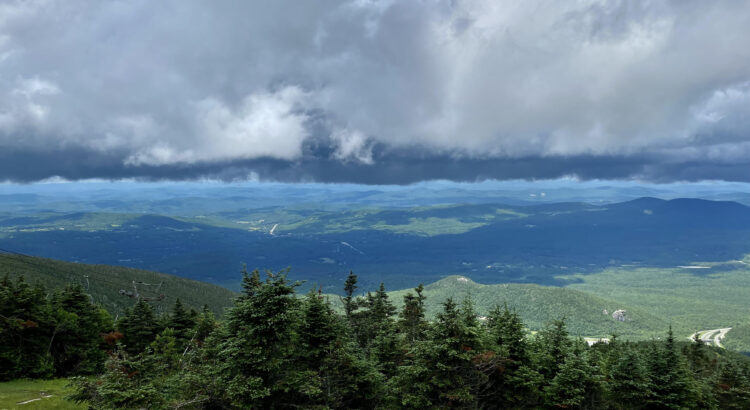By Liz Hoffman, SCA Interpretive Ranger
You’re headed to Franconia Notch State Park for a day hike: the skies are clear, the sun is warm against your back, and nothing is stopping you from reaching the summit of Mt. Lafayette. Well, except for the thunderstorm approaching twenty minutes after you ascend the trail. That wasn’t in the forecast this morning! What on earth is going on?

I’ve lived in New England for over a decade, but Franconia Notch presents a wild micro-climate quite unlike anywhere else I’ve seen – and I was raised on the Great Plains!
When visitors ask about the weather forecast, it’s best to answer honestly: check every hour if possible and prepare for all weather conditions. Every morning, we post the NOAA (National Oceanic and Atmospheric Administration) forecast but at times it can be unreliable, and so are the weather apps on your phone, provided you have any service to begin with.
So what now?
The best course of action is to prepare for anything and always follow hiking guidelines. Hikers are rescued from the White Mountains almost daily, so carrying the 10 Essentials is very important!
The 10 Essentials:
- Navigation: map, compass, altimeter, GPS device, personal locator beacon (PLB) or satellite messenger
- Headlamp: plus extra batteries
- Sun protection: sunglasses, sun-protective clothes and sunscreen
- First aid including insect repellent
- Knife plus a sewing kit for gear repair
- Fire matches, lighter, tinder
- Shelter carried at all times – on a day hike I bring the simple but ever useful black trash bag, which can be used as waterproofing or a bivouac (makeshift shelter)
- Extra food
- Extra water
- Extra clothes
(source: REI)

While hiking, I always carry rain gear, a map, extra clothes and plenty of water and snacks, which is the bare minimum. If you think a plastic water bottle is enough, you’ll find out the hard way that it’s not! You should carry approximately 2-3 liters of water for every hike, no matter how short or strenuous. Let people know when you leave and when you plan to return to your starting/ending point.
Franconia Notch’s powerful weather shifts are still a mystery, but geography can explain some of its moods. The Notch runs north to south, carved down the middle by interstate I-93. The White Mountains are known as the “tailpipe of America” and much of the country’s weather crosses this point east and west.
The towering valley walls of Franconia mimic placing your thumb over the end of a garden hose – wind is forced up the mountains, creating strong crosswinds. Microbursts (short but violent thunderstorms) occur often here.


Many long-time residents consider recent extreme rain events to be a result of climate change. Storms damaging local infrastructure, including road washouts, have not happened in New Hampshire in anyone’s recent memory; tornadoes have become increasingly common.
“If you don’t like the weather, wait a few minutes!”
– a common phrase shared by residents
The best thing you can do for your own safety and the peace of mind of your loved ones while hiking in New Hampshire is to be prepared for everything, because wild weather can happen at any time in the mountain range hosting the some of the world’s most unpredictable weather!
Helpful weather forecasting/prediction resources:
TrailsNH – Know Before You Go
Mountain Forecast – Mountain Weather Forecasts for Mountains Around the World
Mt. Washington Observatory – Regional Weather and Forecasts

